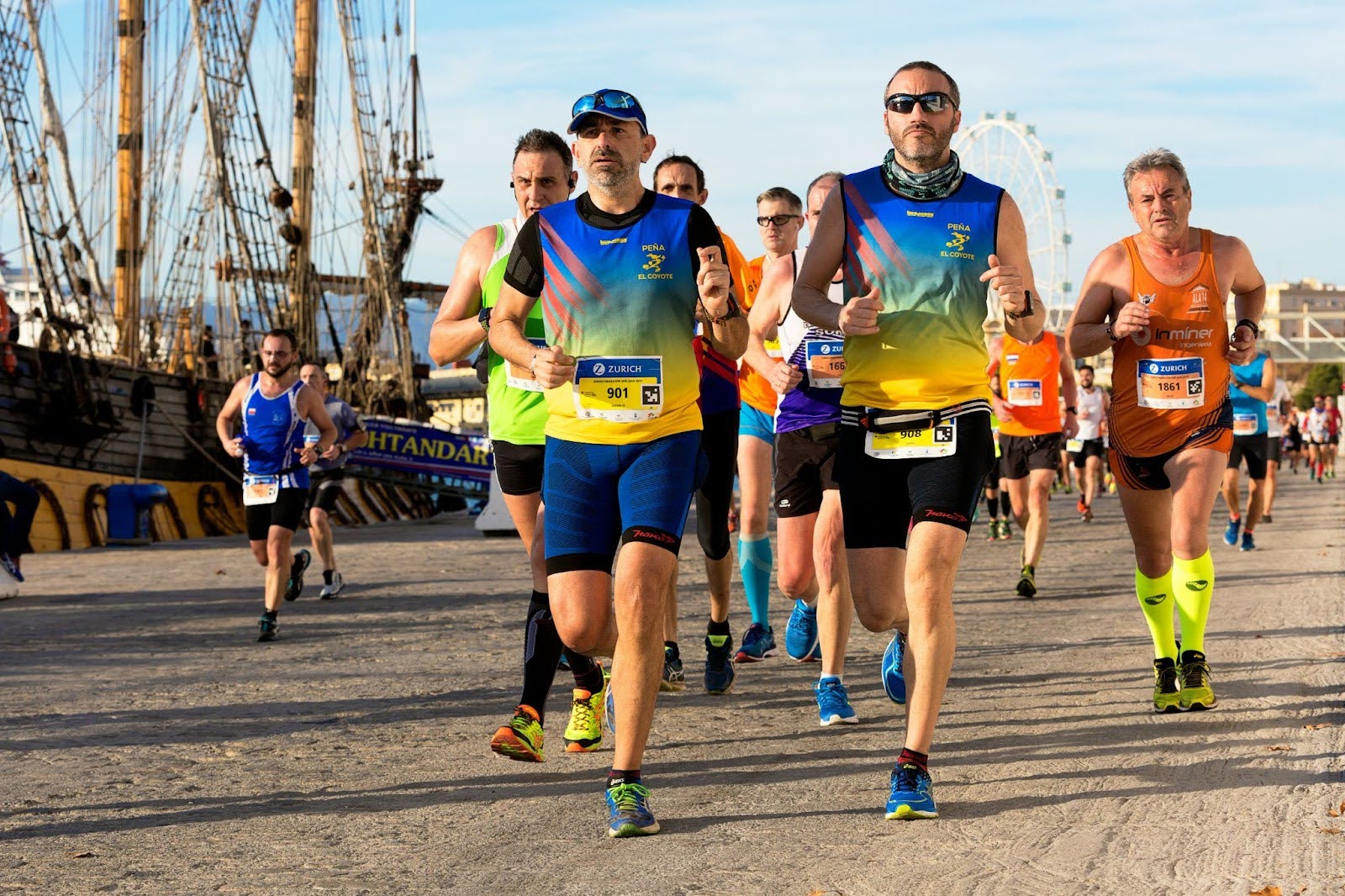By: SEO Mavens
Running is one of the popular forms of exercise worldwide. It’s accessible, requires minimal equipment, and offers a fantastic way to improve physical fitness and mental well-being. Whether you’re a seasoned marathoner or someone who enjoys a quick jog around the block, you’ve likely encountered a fair share of advice on how to run “correctly” or avoid injuries. But how much of what you hear is actually true?
There are countless myths about running—some based on outdated science, others on simple misunderstandings. In this article, we’ll break down 10 of the common myths about running to help you separate fact from fiction. Let’s dive in and see if we can clear up some of the confusion.
Debunking Myths to Help Runners Make Informed Decisions

Running has been around for thousands of years—humans have been running since ancient times, not just for survival but also as a sport. If you’ve ever wondered, when was running invented? It’s important to note that running wasn’t “invented” in the traditional sense; it is a natural human movement that has existed for as long as we have. In fact, running was a key event in the first Olympic Games in ancient Greece around 776 BC.
1. Myth: Running Damages Your Knees
Today, people use running not only for fitness but also for mental health and stress relief. While some think that running is hard on the knees, our bodies are naturally designed for it.
When we run, our muscles, ligaments, and tendons work together to support the knee and absorb shock. Proper running form and mechanics play a big role in distributing the impact safely.
To protect your knees while running, focus on proper form, invest in supportive running shoes, and incorporate strength training into your routine. Strengthening the muscles around the knees, such as the quadriceps and hamstrings, can help stabilize the joints and prevent injuries. Running in moderation and listening to your body are key to staying healthy and enjoying the many benefits that running can offer.
2. Myth: You Should Run Every Day to Stay Fit
While running is a fantastic way to stay fit, running every day isn’t necessary—or even advisable—for most people. Rest days are crucial because they give your muscles time to recover and repair, reducing the risk of injury. Recovery is when your body gets stronger, not during the run itself.
Overtraining can lead to fatigue, decreased performance, irritability, and even injury. If you’re feeling constantly tired, sore, or losing motivation, it might be a sign to scale back. To avoid overtraining, listen to your body, gradually increase mileage, and incorporate rest days into your routine.
Mixing up your workouts with activities like cycling, swimming, strength training, or yoga can help build overall strength, flexibility, and endurance. These cross-training exercises can enhance your running performance and keep things fresh and fun while giving your body a break from the repetitive impact of running.
3. Myth: Running on a Treadmill is the Same as Running Outdoors
Running on a treadmill isn’t quite the same as running outdoors. Treadmills provide a flat, even surface, which reduces the variety of muscle engagement. Running outside involves different terrains, inclines, and declines that engage stabilizing muscles more and offer a varied workout.
Engaging in running can lead to a 30% to 45% lower risk of cardiovascular mortality. Research indicates that running just 5 to 10 minutes per day can provide substantial health benefits, particularly in reducing mortality risks. The ideal frequency for health benefits is typically two to three times a week at a slow or moderate pace. Outdoor running offers fresh air, changing scenery, and the challenge of real-world conditions, which can be mentally stimulating and boost motivation. On the treadmill, the repetitive environment can feel monotonous, which might make it harder to stay motivated over time.
Treadmills are great for controlled environments, like running in bad weather or when focusing on pace. However, if you’re looking for a more varied workout and mental stimulation, outdoor running is often the better choice. Balancing both can offer the best of both worlds.
4. Myth: Stretching Before Running Prevents Injuries
Many believe that stretching before running prevents injuries, but not all stretching is equal. Static stretching—holding a stretch for a prolonged period—can actually reduce muscle performance if done before running. Dynamic warm-ups, which involve moving stretches like leg swings and walking lunges, better prepare your muscles for the workout ahead by increasing blood flow and flexibility.
Research shows that static stretching before a run doesn’t significantly prevent injuries and can sometimes even decrease performance by weakening the muscles temporarily. Instead, studies suggest that dynamic warm-ups improve range of motion, muscle activation, and overall running performance.
An effective warm-up should include dynamic movements that mimic running motions. Try leg swings, high knees, butt kicks, and walking lunges to warm up the muscles and increase your heart rate. These exercises help prepare your body for running and reduce the risk of injury by gradually increasing your body’s readiness for exercise.
5. Myth: The More You Sweat, The More Fat You Burn
Sweating is your body’s way of cooling down, not necessarily a sign of how many calories you’re burning. Fat loss occurs when you burn more calories than you consume, regardless of how much you sweat. Your body burns calories through various activities, including running, but the amount of sweat doesn’t directly correlate with fat loss.
It’s a common myth that sweating more means burning more fat. In reality, sweating a lot might just mean you’re working hard or it’s a hot day. Sweating doesn’t equal fat burning—it’s just your body’s cooling mechanism. So, don’t be fooled by a drenched shirt into thinking you’ve had a super effective fat-burning workout.
What truly impacts fat burning is the balance between calories in and calories out, your exercise intensity, and your overall diet. Regular exercise, a balanced diet, and good hydration are key to effective weight management. So, focus on creating a healthy lifestyle rather than just monitoring how much you sweat. Your body—and your waistline—will thank you.
6. Myth: You Should Run Fast All the Time for Premier Results
Running fast all the time isn’t the key to the premier results. In fact, building a strong running base involves incorporating varied paces into your training. Running at different speeds helps improve endurance, build strength, and prevent burnout. It’s about finding a balance, not just pushing yourself to the limit every day.
Mixing up your running routine with interval training, tempo runs, and long runs is essential. Interval training boosts speed and cardiovascular fitness by alternating between high-intensity bursts and recovery periods. Tempo runs enhance your stamina by running at a comfortably hard pace, while long runs build endurance and mental toughness. Each type of run plays a unique role in improving your overall performance.
7. Myth: Running is Only for the Young and Fit
Running isn’t just for the young and fit—it’s a versatile activity that can benefit people of all ages. For youth, it’s great for building fitness and discipline. Adults often use running to stay healthy and manage stress. And seniors? Running can be adapted to help maintain mobility and cardiovascular health. Age and fitness level shouldn’t limit you from lacing up those running shoes
If you’re new to running or returning after a break, start slowly and listen to your body. Modify your routine with shorter distances and slower paces, and consider adding low-impact exercises like walking or swimming to complement your running. Always consult with a healthcare provider before starting a new fitness regimen, especially if you have existing health concerns.
8. Myth: Running Shoes Alone Prevent Injuries
While having the right running shoes is important, they’re not a cure-all for injury prevention. Good footwear provides support, cushioning, and stability, which can help reduce the risk of some injuries. However, they’re just one piece of the puzzle when it comes to running safety.
Besides shoes, consider investing in gear like moisture-wicking socks and supportive insoles. Also, incorporate strength training, flexibility exercises, and a proper warm-up and cool-down routine into your running regimen. Listening to your body and allowing time for recovery are key to staying injury-free. Remember, running shoes are important, but they work great when combined with good habits and a holistic approach to fitness.
9. Myth: You Shouldn’t Eat Before Running
Eating before running can actually be beneficial. Your body needs fuel to perform well, and a small snack before your run can help maintain energy levels and improve performance. The key is to choose the right foods and timing.
For optimal energy, eat a balanced snack about 30 to 60 minutes before running. Focus on easily digestible foods with a mix of carbs and protein, like a banana with a small amount of peanut butter or a piece of toast with honey. Avoid heavy, greasy, or high-fiber foods that might upset your stomach.
The idea that running on an empty stomach burns more fat is misleading. While some believe fasting before a run enhances fat loss, research shows that it can lead to decreased performance and muscle loss. Eating a light snack helps sustain your energy, improve your run, and support recovery afterward. So, fueling up properly is key to a successful and enjoyable run.
10. Myth: You Must Run a Marathon to Be a “Real Runner”
There’s a myth that you have to run a marathon to be considered a “real runner,” but that’s far from the truth. Running events come in various distances, from 5Ks and 10Ks to half-marathons and ultramarathons. Each type of race offers its own challenges and rewards, and you don’t need to run a marathon to prove your commitment to the sport.
Shorter distances like 5Ks and 10Ks are fantastic ways to enjoy running. They’re often less intimidating, easier to fit into a busy schedule, and still provide great health benefits and a sense of accomplishment. Training for and completing these races can be just as fulfilling as running a marathon.
FAQs
1. Can running really damage your knees?
Running is not inherently bad for your knees. In fact, studies suggest that runners often have lower instances of knee osteoarthritis compared to sedentary individuals. Proper running techniques and supportive footwear can help mitigate risks.
2. How can I prevent injuries while running?
To prevent injuries while running, consider the following tips:
- Wear appropriate shoes: Get fitted for quality running shoes that suit your foot type.
- Warm up and cool down: Spend 5-10 minutes warming up before runs and cooling down afterward.
- Build up gradually: Increase your running distance and intensity slowly to avoid overuse injuries.
- Incorporate strength training: Strengthening your core, hips, and legs can improve your form and reduce injury risk.
3. Is it better to run on a treadmill or outdoors?
Both treadmill and outdoor running have their benefits. Treadmills offer a controlled environment, reducing impact and allowing for easier pacing. Outdoor running provides varied terrain and natural scenery, which can enhance motivation and enjoyment. Ultimately, the choice depends on personal preference and goals.
4. What is the premier diet for runners?
A balanced diet for runners should include:
- Carbohydrates: Essential for energy, focus on whole grains, fruits, and vegetables.
- Proteins: Important for muscle repair, include lean meats, dairy, legumes, and nuts.
- Fats: Healthy fats from sources like avocados, nuts, and olive oil support overall health.
- Hydration: Staying well-hydrated is crucial, especially before, during, and after runs.
Disclaimer: This content is for informational purposes only and is not intended as medical advice, nor does it replace professional medical expertise or treatment. If you have any concerns or questions about your health, always consult with a physician or other healthcare professional.
Published by: Nelly Chavez

















